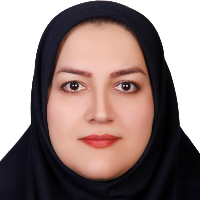Evaluation of the Future Changes of Climatic Aridity Indices in the Central Iran Watershed under Climate Change Scenarios
The problem of drought and water crisis in the in the central Iran watershed has become serious in recent years due to consecutive droughts and increased water consumption in drinking, agriculture and industry sectors. Since rain is the only source of water supply in this catchment area, a decrease in the amount of rainfall with this intensity can cause a widespread drought and eventually large migrations from these areas. Therefore, the aim of this research is to analyze the changes in the aridity index in the vast area of the central Iran watershed in future.
In order to achieve the study's objective, the minimum and maximum air temperature, sunshine hours, and precipitation of 40 synoptic stations in the Central Iran watershed for a period of 20 years (1991-2010) were received from the Meteorological Organization.Then the values of potential evapotranspiration, aridity index, and Angot precipitation index were calculated for each station in the current conditions. In order to project changes in the aridity index in the future, the output of three MIROC5, HadGEM2-ES, and GFDL-CM3 models for the historical period (1991–2010) and the medium future (2041–2060) under the RCP4.5 scenario and based on the LARS- WG6 scaled down. After evaluating the accuracy of the models against the observational data, the index values were calculated in future conditions, and zoning maps were drawn for the study area.
Projection of changes in evapotranspiration values under the RCP4.5 scenario (2041–2060) showed that the most changes were in January, March, December, and November. Shahrekord showed the highest percentage of incremental changes, with 36.8% change in January compared to the base period. In terms of rainfall regime, the Central Iran watershed has a winter rainfall regime based on the Angot precipitation index in the current conditions. The HadGEM2-ES model is consistent with the base period, but based on the MIROC5 and GFDL-CM3 models, the winter precipitation in many stations will change to the all-season precipitation regime in the future. Climatic zoning of the UNEP aridity index in the studied area indicated that in current conditions, more than half of the stations have a dry climate. Only Kohrang has a humid climate with an aridity index value of 0.78. Shemiranat and Oligoders have semi-dry conditions with values of 0.21 and 0.20, respectively. The evaluation of the future climate conditions according to the GFDL-CM3 model shows that the humid climate in central Iran will gradually disappear, while the semi-arid climate will expand in this region. The output of the MIROC5 model also shows the expansion of the ultra-arid climate zone in different parts of the catchment area of Central Iran.
The results showed that the aridity index values based on selected GCM models have decreased in the studied area compared to the observation period. Therefore, a large number of stations that have dry conditions in the base period will experience ultra-dry conditions in the future climate.The evapotranspiration potential in the Central Iran watershed is increasing during all months of the year, especially in wet stations in the west. This issue shows the dominance of the aridity index over this region in future conditions.
- حق عضویت دریافتی صرف حمایت از نشریات عضو و نگهداری، تکمیل و توسعه مگیران میشود.
- پرداخت حق اشتراک و دانلود مقالات اجازه بازنشر آن در سایر رسانههای چاپی و دیجیتال را به کاربر نمیدهد.



